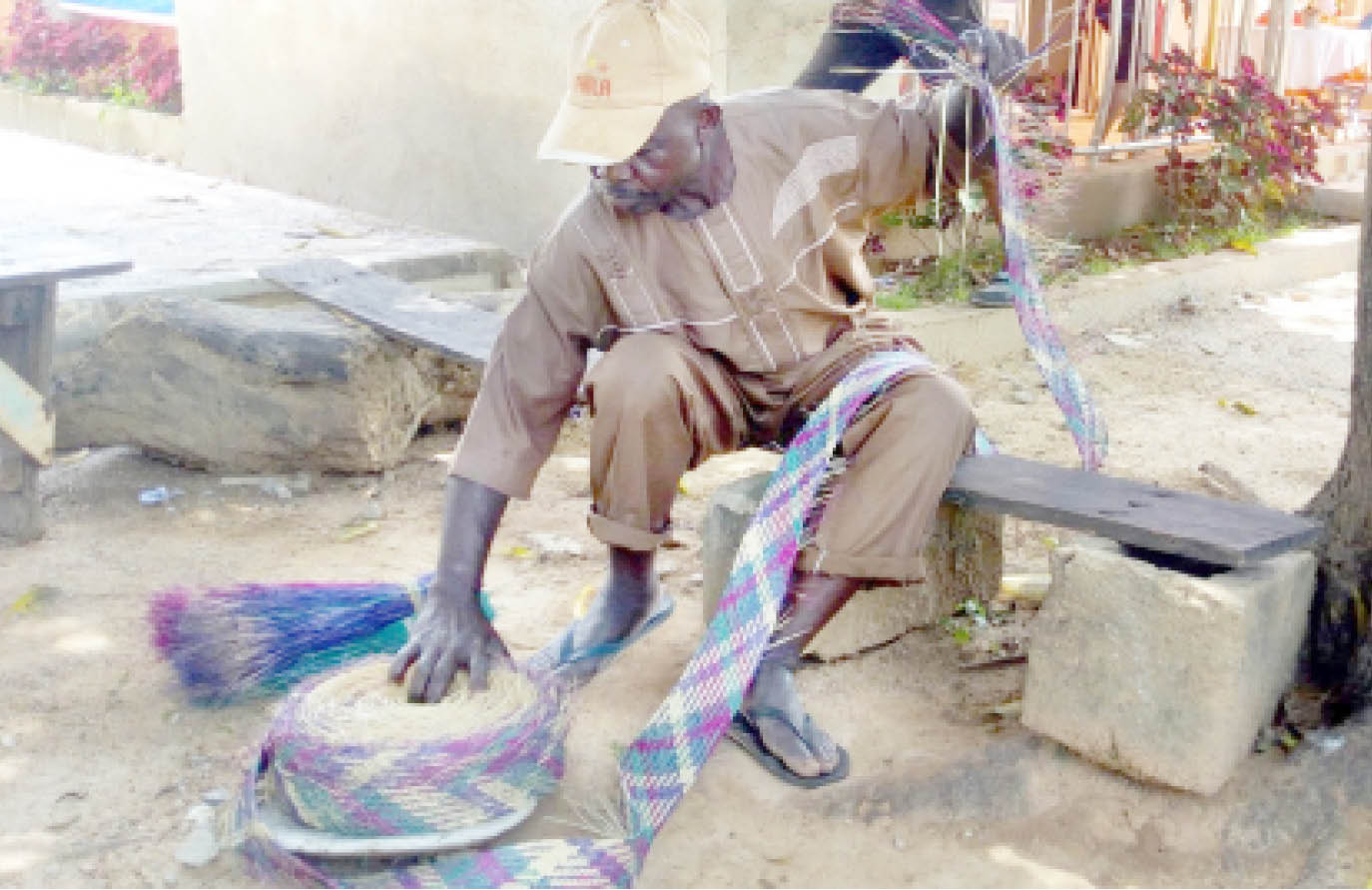Meet Kaduna’s 67-year-old local mat weaver
Seated comfortably on a wooden plank supported by three cement blocks, 67-year-old Peter Zango Garkuwa is engrossed in the weaving of a multi-coloured local mat, a trade he learned from his father. Peter, who has been weaving mats since he was a child, does the weaving effortlessly while he engages in different conversations with other […]

As he weaves the mat, he rolls in into a wheel-like object until the mat is complete
Seated comfortably on a wooden plank supported by three cement blocks, 67-year-old Peter Zango Garkuwa is engrossed in the weaving of a multi-coloured local mat, a trade he learned from his father.
Peter, who has been weaving mats since he was a child, does the weaving effortlessly while he engages in different conversations with other people using only his hands and eyes to perform the art.
One would think modernization and the need for people to go with the trend will make such businesses go extinct but Zango says he is not deterred by the trend because he’s certain a lot of people still patronize the straw mat despite the existence of the more modern rubber mat.
According to him, the rubber mat can never replace the straw mat because though the rubber mat lasts longer, the straw mat is more comfortable especially during the hot season.
Narrating how he ventured into the trade, Peter said, “I started weaving mats in my youth and later stopped. I started again when I found the plant used in making the mat somewhere in St. Michael. So, I rekindled my interest in it about ten years ago.

“I used to get the materials from St Michael before the trees were cut down. Now, I get the materials at Kaduna Polytechnic in Barnawa from a plant known as Kinjinjiri.”
He however explained that when he gets the plant, he dries it under the sun and thereafter colours the dried plants and then begins to weave the mat.
Our correspondent observed how Peter took the strands of straw, one colour after the other, to weave what will eventually become a bed for others to lie on.
“I put colour on the straw to make it look beautiful and attractive and it is the colour that sells the mat because with different colours, a customer can choose the one he or she likes most,” he said.
He stated that the dried stick used in making the mat can also be used to weave a Fulani cap known as marfa.
He continued, “It takes me seven days to make one mat, though depending on the size of the mat and if I have all the material I need ready, I can make about three a day.
“The standard measurement used in determining how big or small a mat is is the number of lines that appears on the mat. For instance, the big mat has eight lines while the small mat has six lines. It takes eight days to weave the big size and six days to weave the small one.
“I weave with my hand since it is for local use and because we have not gotten any machine yet that can do the weaving.”
Peter expressed contentment with the proceeds from the business adding, “I have achieved a lot with the business.”
“I can recall when I started, as a youth; the proceeds I made after sale were what I used in taking care of myself; buying my clothing and other essential things I needed but now I weave because it is an inheritance.
His mats cost between N1000, N1500 and N2000 depending on design, number of colours used and size of mat.
He expressed concern over the threat of modernization on the business saying, “In the past, this kind of mat was widely used in homes but now, only a limited few still use it since there are other alternatives. For instance, the rubber mat is preferable now and it’s killing the business.
“The rubber mat last more than this type but during the heat when you sleep on the straw mat, you will not sweat compared with the rubber mat.”
The Director General, Ekiti State Council for Arts and Culture, Ambassador Wale Ojo-Lanre had in April 2019 expressed the state governments readiness to support local mat weavers in Ogotun in order to expose their products at both local and international markets for economic benefit.
But Peter faces a major challenge which is lack of patronage due to modernization and called on fellow craftsmen to continue to engage in the weaving of local straw mat in order to keep the craft alive for the benefit of the future generation.
“Just like me, I learned it from my parents. Then, the mat was what we used for sleeping and if you do not know how to make one for yourself, you will sleep on the floor. I tried teaching my children also, but you know children of nowadays, they just want to go to school and study.”
